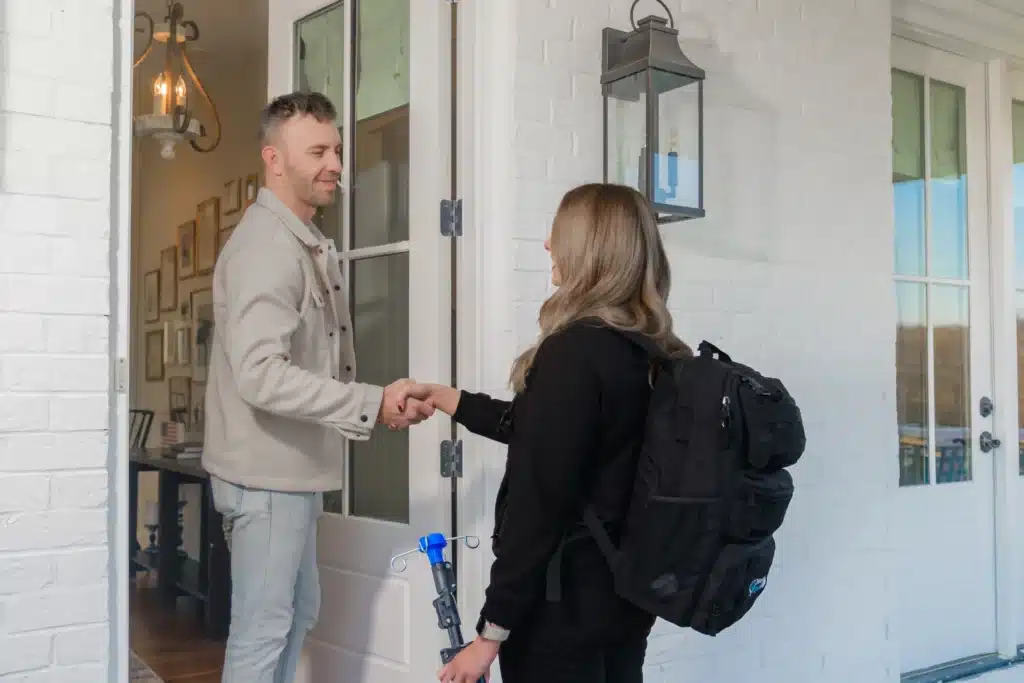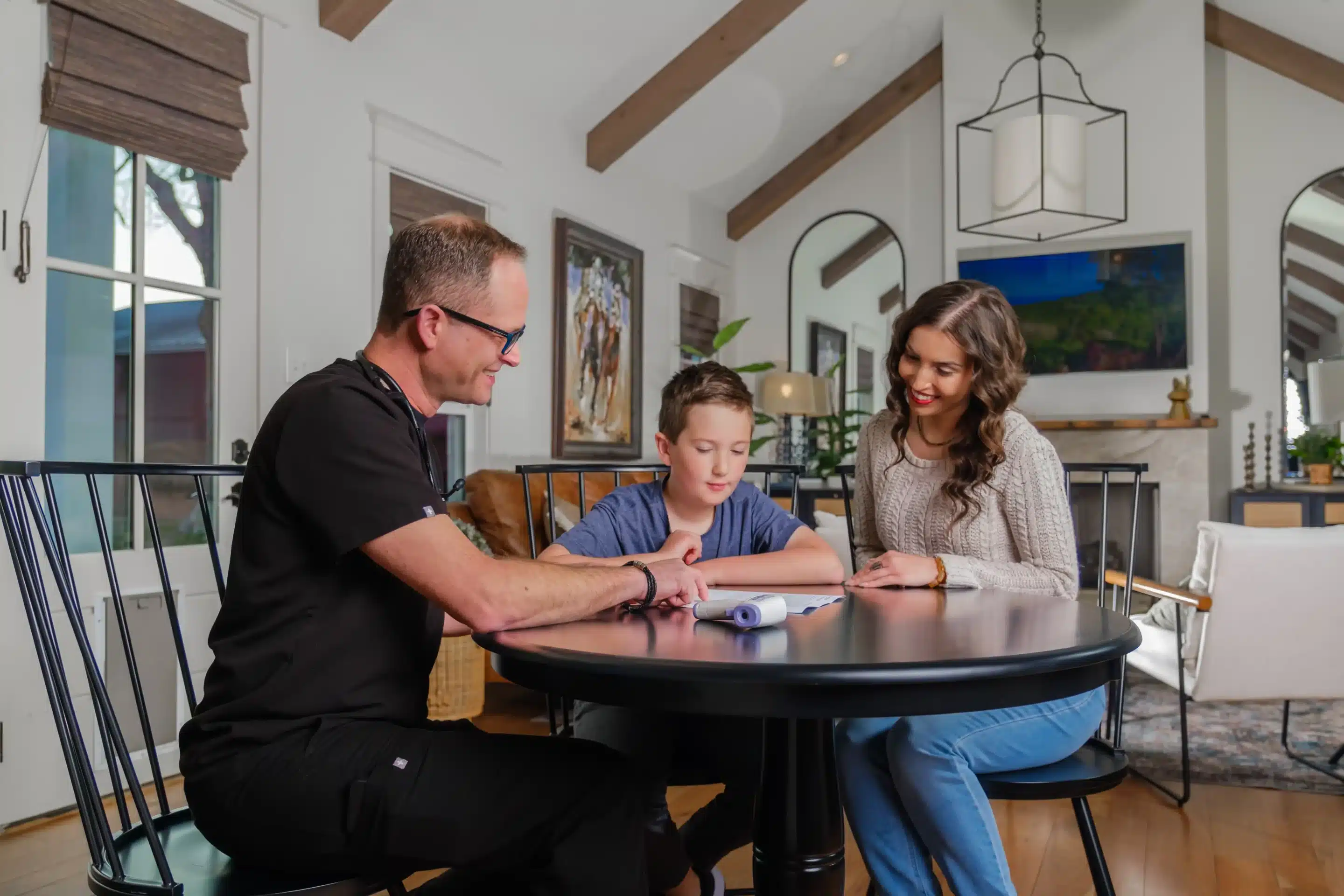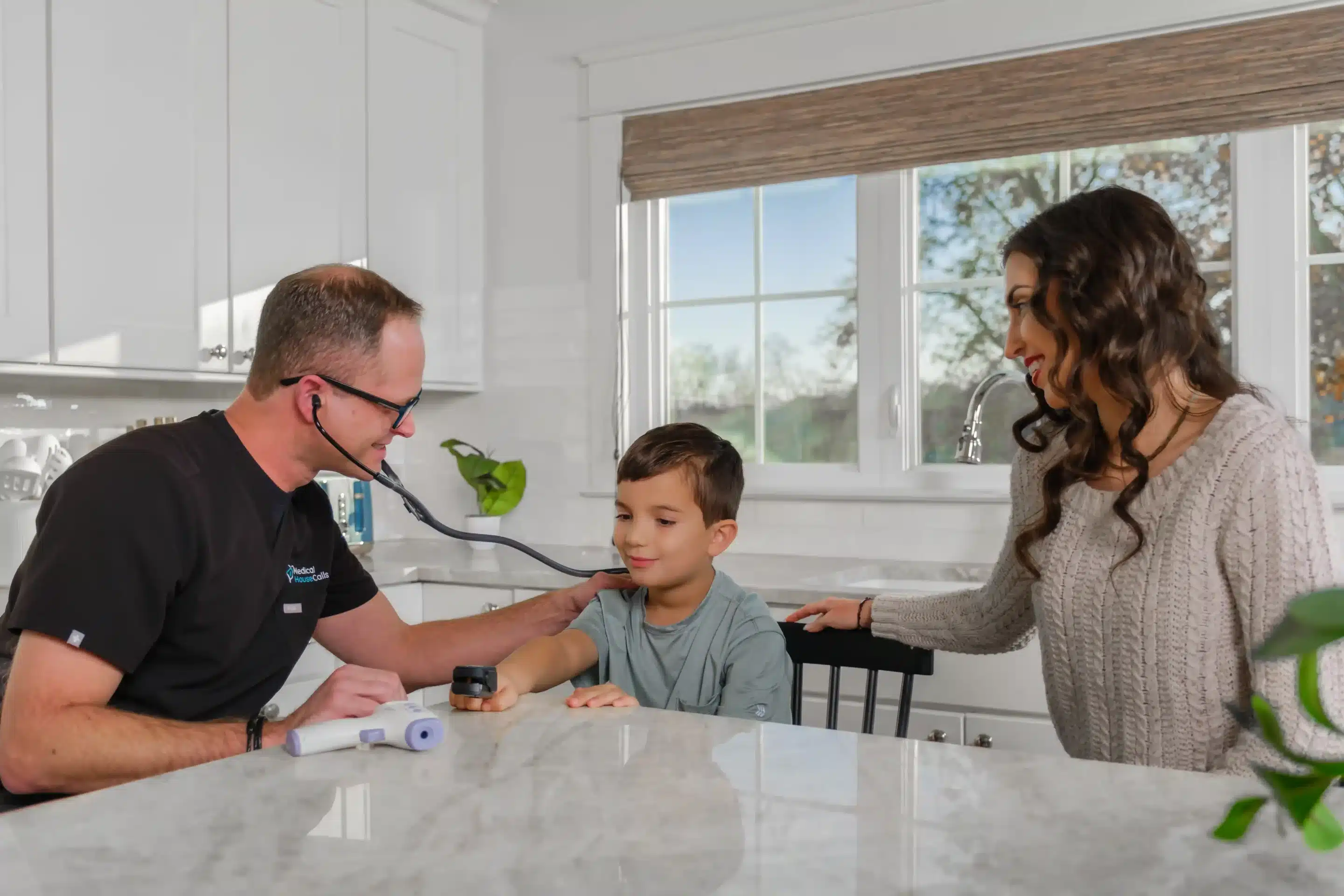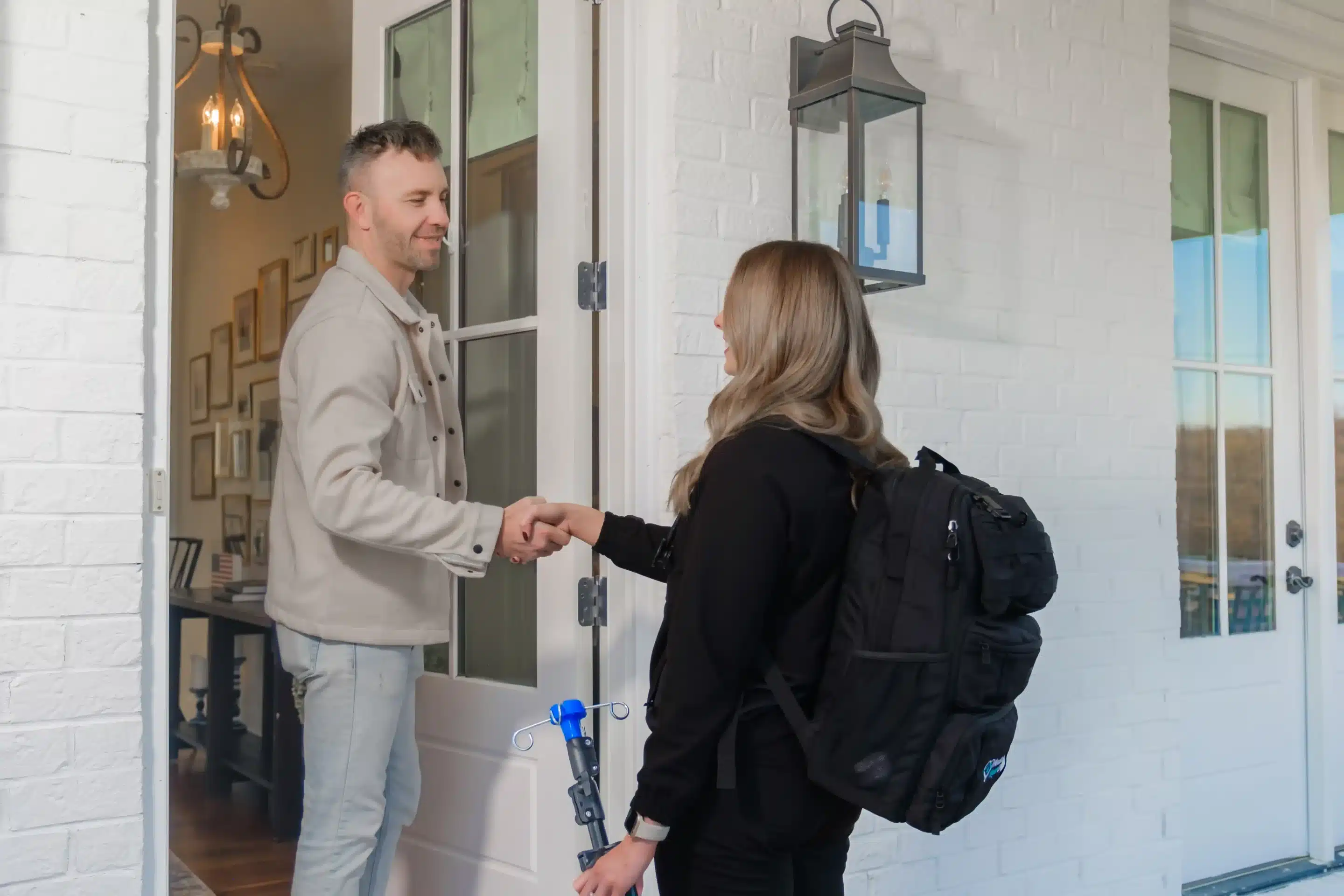Table of Contents
A Comprehensive Guide On How Home-Based Primary Care Works
In today’s fast-paced world, healthcare is evolving to meet the needs of individuals who prefer or require medical attention in the comfort of their own homes. Home-based primary care is a patient-centered approach that brings comprehensive medical services directly to individuals, improving access to quality healthcare. But how does home-based primary care work, and who can benefit from it?
In this article, Medical House Calls will explore the ins and outs of primary home care, its benefits, and what to expect from a home-based primary care provider.

Concierge Primary Care At Your Doorstep
Experience primary care without leaving your home. Join our waitlist today and enjoy healthcare tailored to your needs–comfortably and conveniently.
What Is Home-Based Primary Care?
Home-based primary care (HBPC) is a healthcare service that provides ongoing medical care to patients in their homes instead of a traditional clinic or doctor’s office. This model is particularly beneficial for individuals with chronic conditions, mobility limitations, or those who struggle with transportation to medical facilities.
Primary home care services typically include preventive care, chronic disease management, medication management, diagnostic testing, and urgent medical attention for non-emergency situations. Healthcare providers, including physicians, nurse practitioners, and physician assistants, visit patients in their homes, offering personalized care tailored to each individual’s needs.
How Home-Based Primary Care Works
Understanding how home-based primary care works can help patients make informed healthcare decisions. Here’s a step-by-step breakdown of what to expect:
1. Initial Consultation and Assessment
The process begins with an initial consultation, where a healthcare provider visits the patient’s home to assess their overall health and medical history. This visit helps the provider determine the patient’s specific needs and develop a personalized care plan.
During this assessment, the provider may:
- Review the patient’s medical history
- Conduct a physical examination
- Discuss current medications
- Identify potential health risks
- Establish care goals
2. Developing a Personalized Care Plan
Once the assessment is complete, the provider creates a customized care plan based on the patient’s health conditions and lifestyle. This plan may include:
- Regularly scheduled home visits
- Preventive screenings and immunizations
- Medication management and prescriptions
- Chronic disease management for conditions such as diabetes, hypertension, or heart disease
- Coordination with specialists and other healthcare professionals
3. Routine Home Visits and Ongoing Care
Primary home care involves scheduled visits from healthcare providers to monitor the patient’s health and address any new or existing concerns. These visits allow for early detection of potential health issues, reducing the risk of hospitalizations and emergency room visits.
During routine visits, the provider may:
- Check vital signs (blood pressure, heart rate, oxygen levels, etc.)
- Adjust medications if necessary
- Provide wound care or injections
- Educate patients and caregivers on managing chronic conditions
- Offer lifestyle and dietary recommendations
4. Telehealth and Remote Monitoring
In addition to in-person visits, many home-based primary care providers incorporate telehealth and remote monitoring to enhance patient care. Patients may have virtual check-ins with their providers, allowing for timely medical advice without the need for a home visit. Wearable devices and remote monitoring tools can also help track vital signs, alerting healthcare professionals to potential issues before they become serious.
5. Coordination with Specialists and Other Services
Home-based primary care providers work closely with specialists, therapists, and other healthcare professionals to ensure comprehensive patient care. If a patient requires physical therapy, occupational therapy, or specialized treatment, the provider can coordinate these services and facilitate referrals to the appropriate healthcare professionals.
6. Emergency Planning and Hospitalization Prevention
One of the primary goals of home-based primary care is to prevent unnecessary hospitalizations. By closely monitoring patients and addressing medical concerns promptly, healthcare providers can often prevent minor issues from escalating into serious conditions that require hospital admission. Additionally, providers create emergency plans for patients, ensuring they receive immediate care in case of a medical crisis.

Benefits of Home-Based Primary Care
Home-based primary care offers numerous advantages for patients, caregivers, and the healthcare system as a whole. Some key benefits include:
1. Increased Accessibility to Healthcare
For individuals with mobility issues, chronic illnesses, or those who live in remote areas, home-based primary care eliminates the barriers to accessing regular medical attention.
2. Improved Patient Comfort and Convenience
Receiving care at home allows patients to remain in a familiar and comfortable environment, reducing stress and anxiety associated with clinic visits.
3. Personalized and Holistic Care
Primary home care providers develop strong patient-provider relationships, allowing for more personalized and holistic treatment plans tailored to individual needs.
4. Better Management of Chronic Conditions
Patients with chronic diseases benefit from regular monitoring and proactive treatment, leading to better health outcomes and an improved quality of life.
5. Reduced Hospitalizations and Emergency Room Visits
By addressing medical concerns early and providing preventive care, home-based primary care significantly reduces the need for hospital visits and emergency interventions.
6. Support for Family Caregivers
Caregivers play a crucial role in patient health, and home-based primary care provides them with guidance, support, and education to ensure their loved ones receive the best possible care.
Who Can Benefit from Home-Based Primary Care?
Home-based primary care is ideal for:
- Seniors who have difficulty traveling to medical appointments
- Patients with chronic illnesses such as diabetes, heart disease, or respiratory conditions
- Individuals recovering from surgery or hospital stays
- Those with disabilities or mobility limitations
- Patients requiring palliative or hospice care
Finding a Home-Based Primary Care Provider
If you or a loved one could benefit from home-based primary care, finding the right provider is essential. Look for a healthcare service that offers:
- Experienced and compassionate providers
- Comprehensive medical services
- Flexible scheduling and emergency availability
- Coordination with specialists and hospitals
At Medical House Calls, we specialize in delivering high-quality, patient-centered home-based primary care. Our team is dedicated to providing convenient and compassionate healthcare tailored to your needs.
Choose Medical House Calls as Your Primary Care Provider
Home-based primary care is revolutionizing healthcare by making it more accessible, personalized, and effective. Understanding how home-based primary care works can help patients and caregivers make informed decisions about their healthcare needs. If you or a loved one is looking for convenient, high-quality medical care in the comfort of your home, consider reaching out to a trusted primary home care provider.
Contact Medical House Calls today at 615.838.2375 to learn more about our home-based primary care services and to schedule an appointment.
Family & Individual Care Available
Enjoy personalized primary care customized for families and individuals, delivered conveniently at home. Discover flexible plans designed to keep everyone healthy and thriving.















